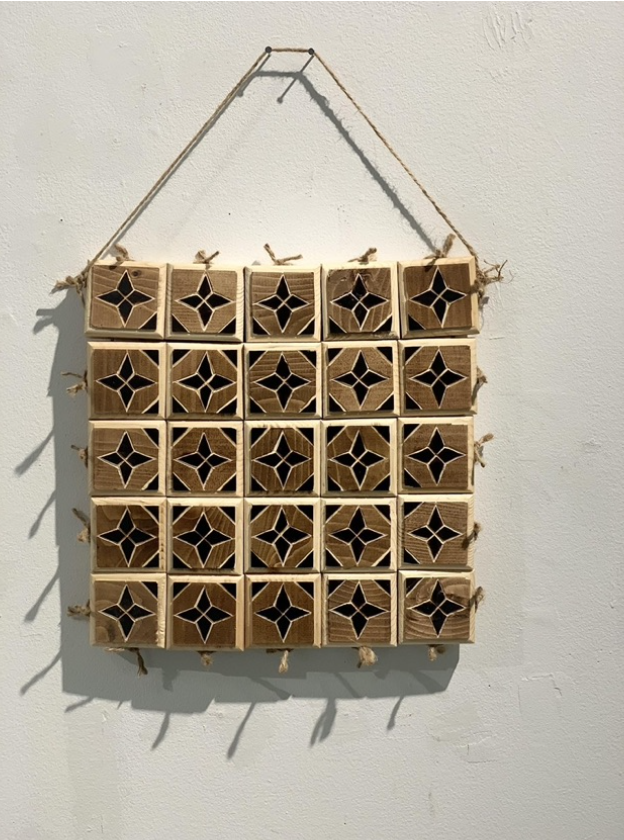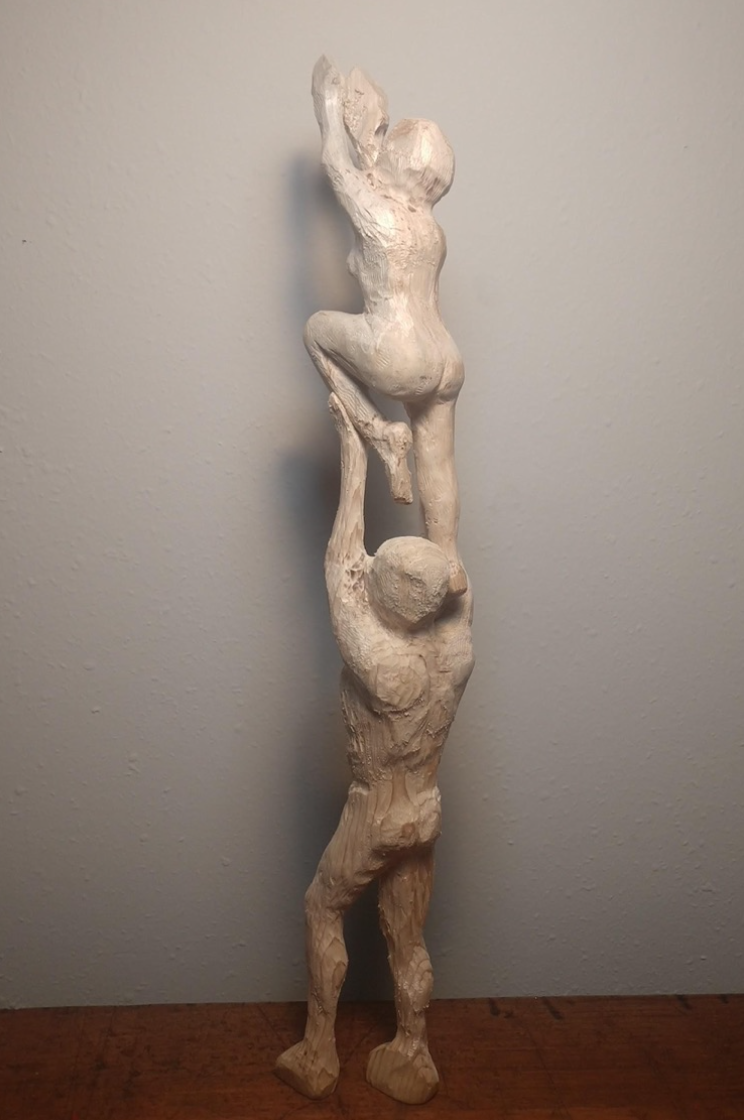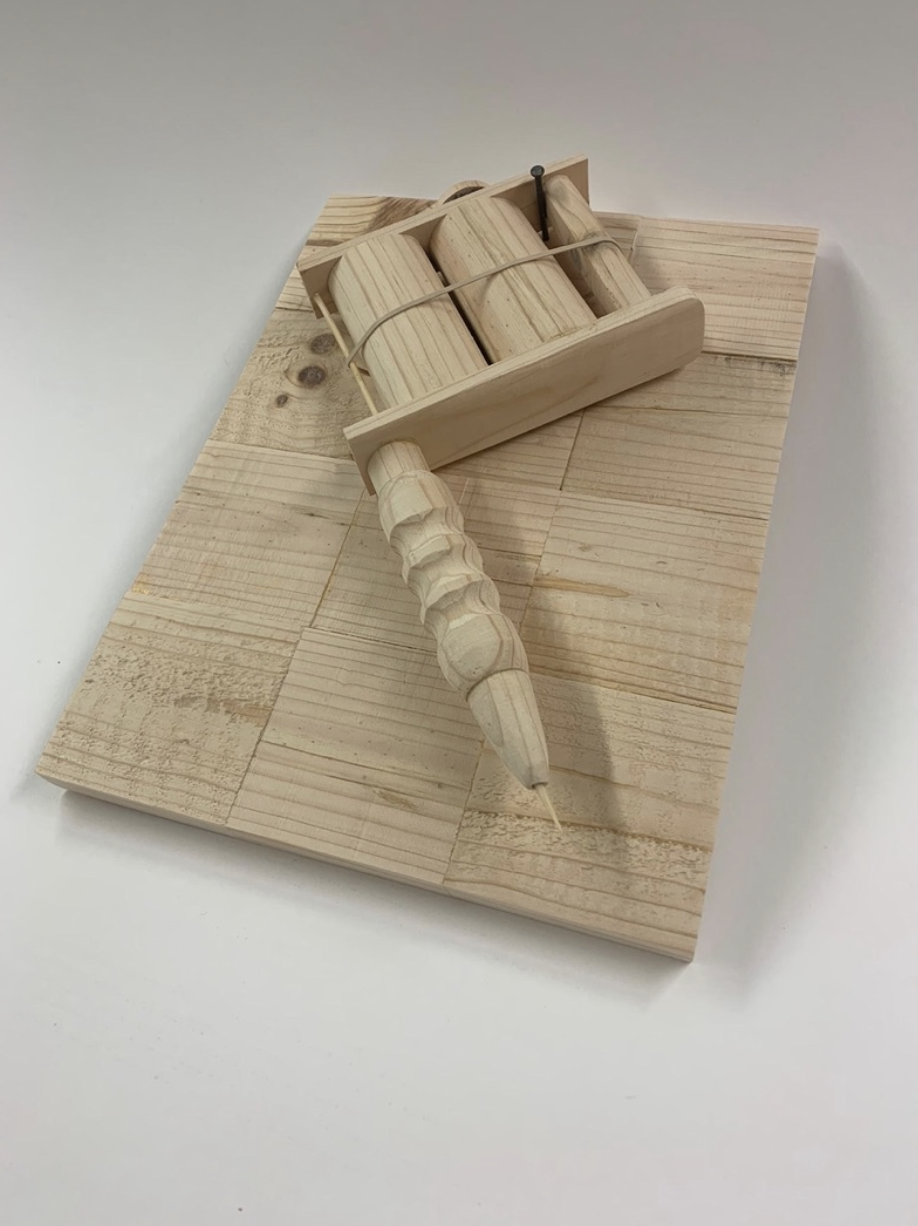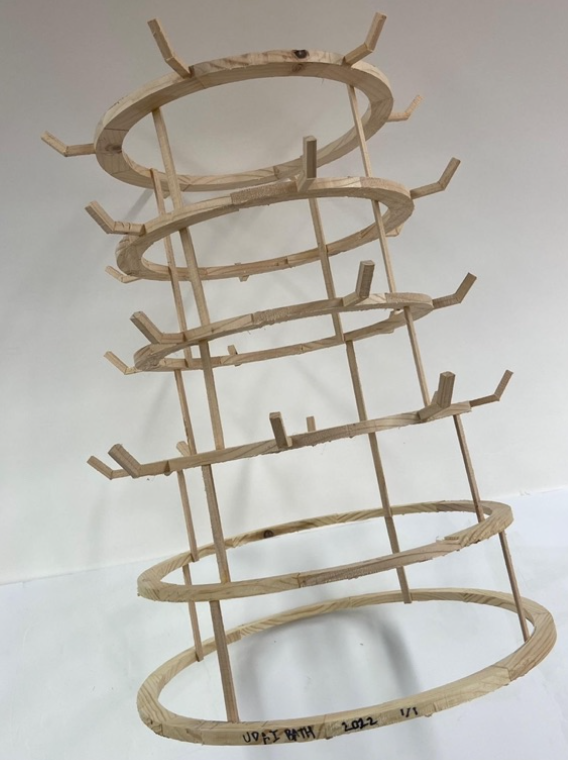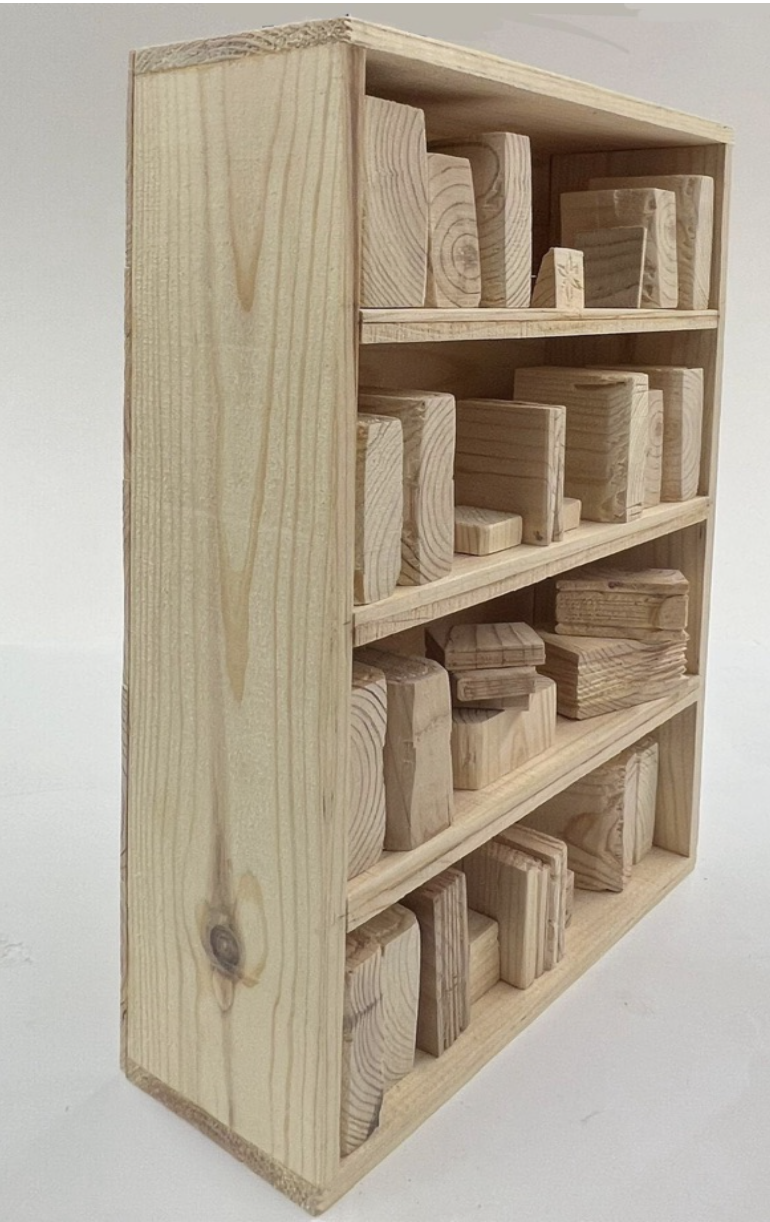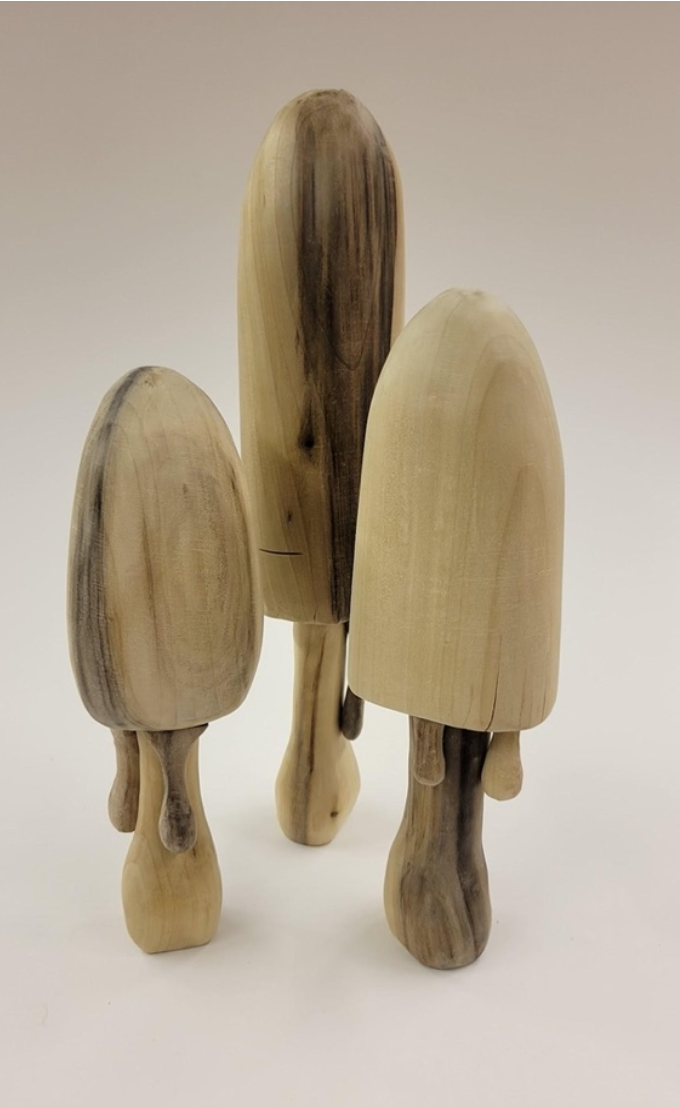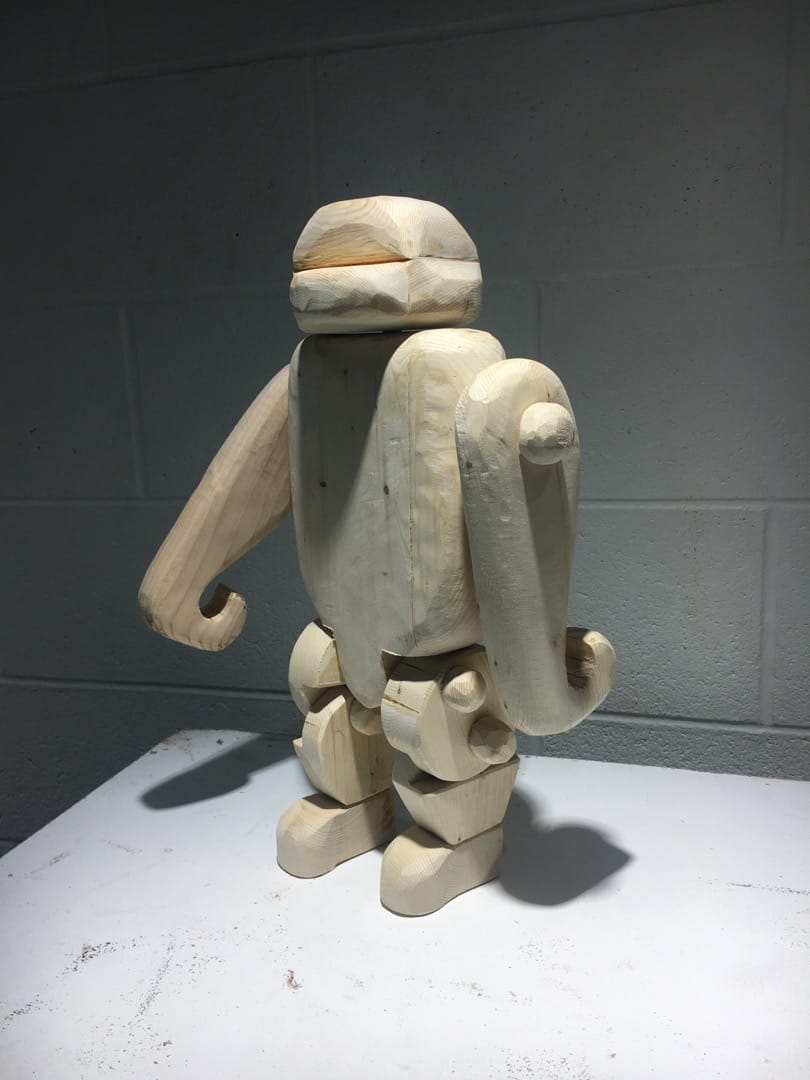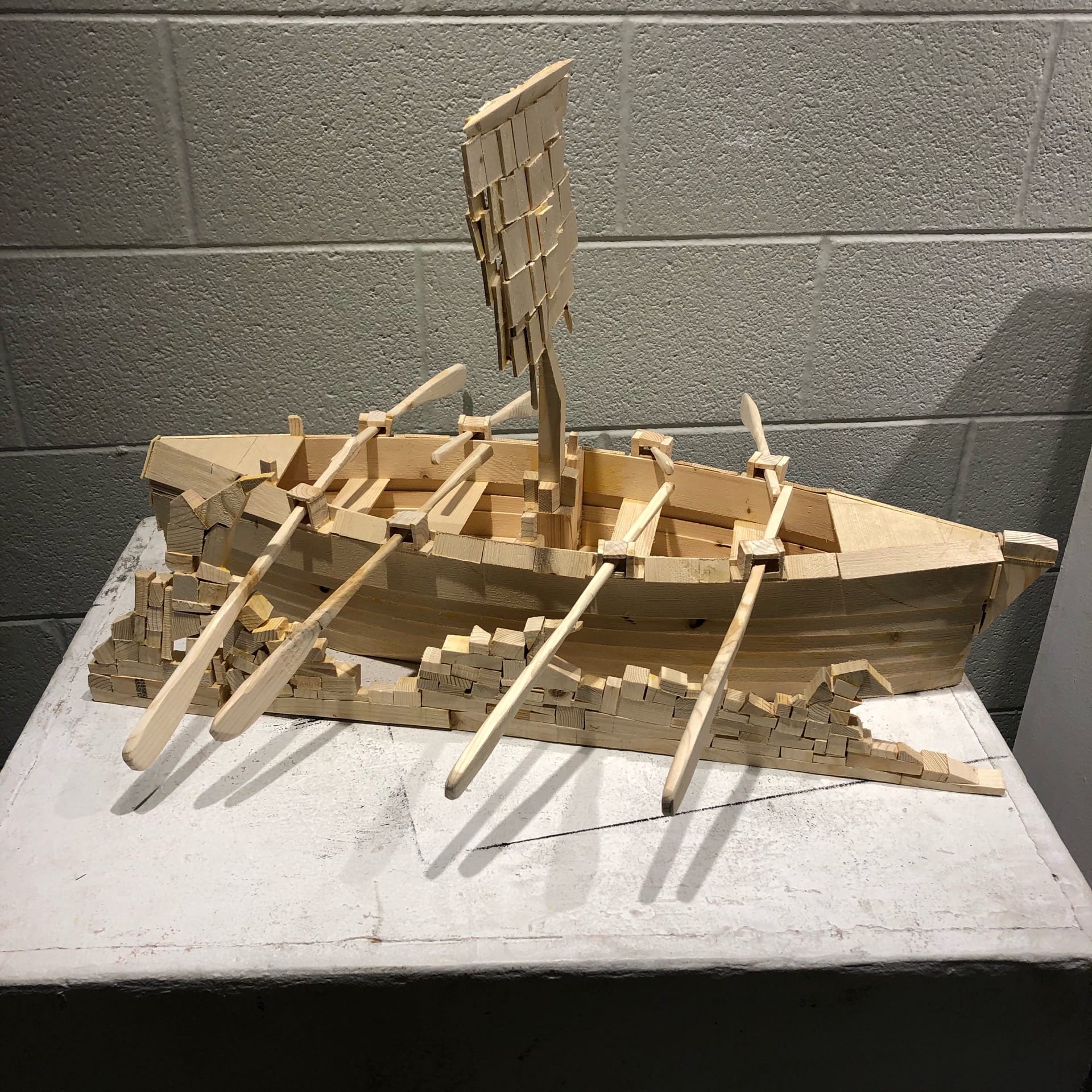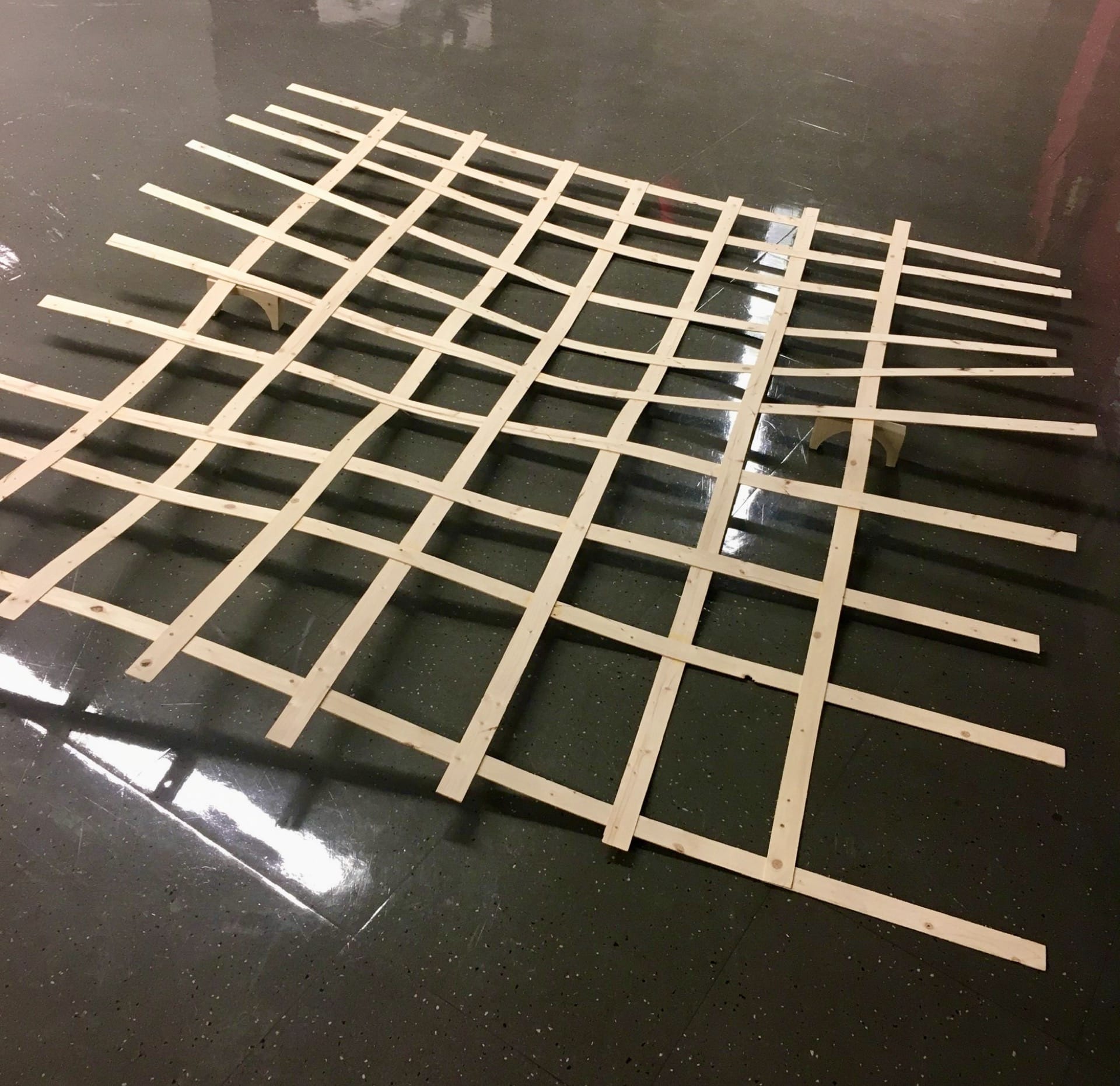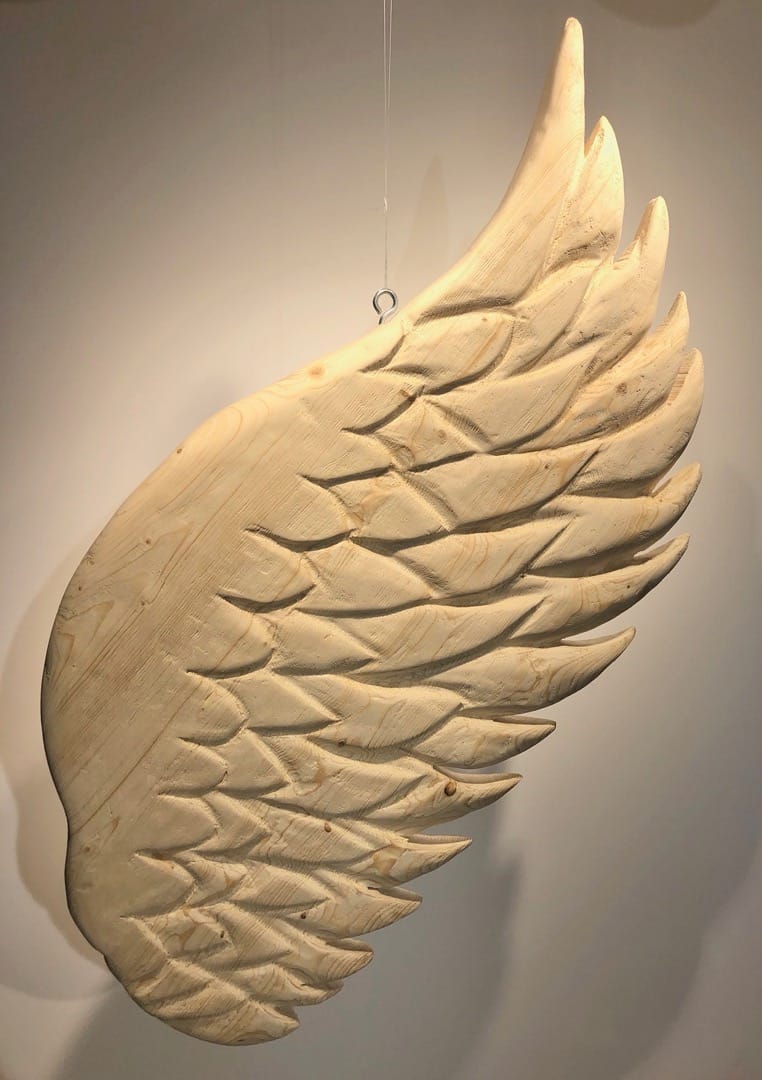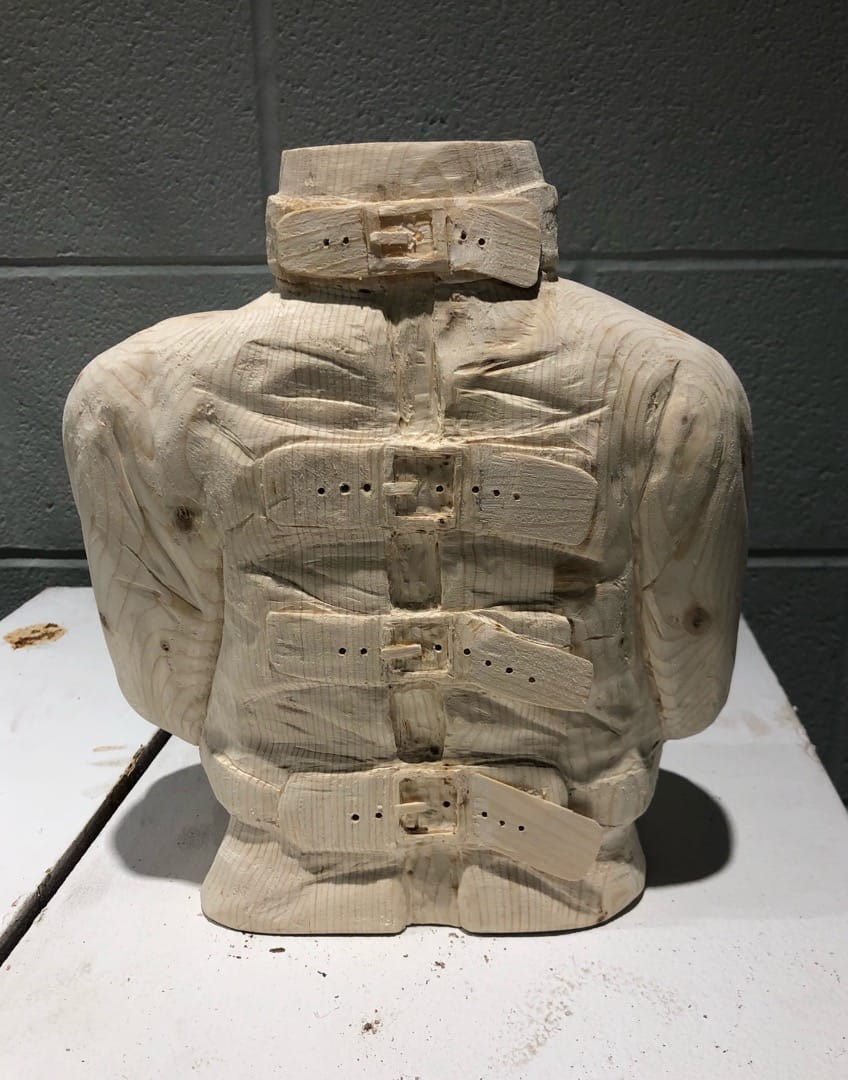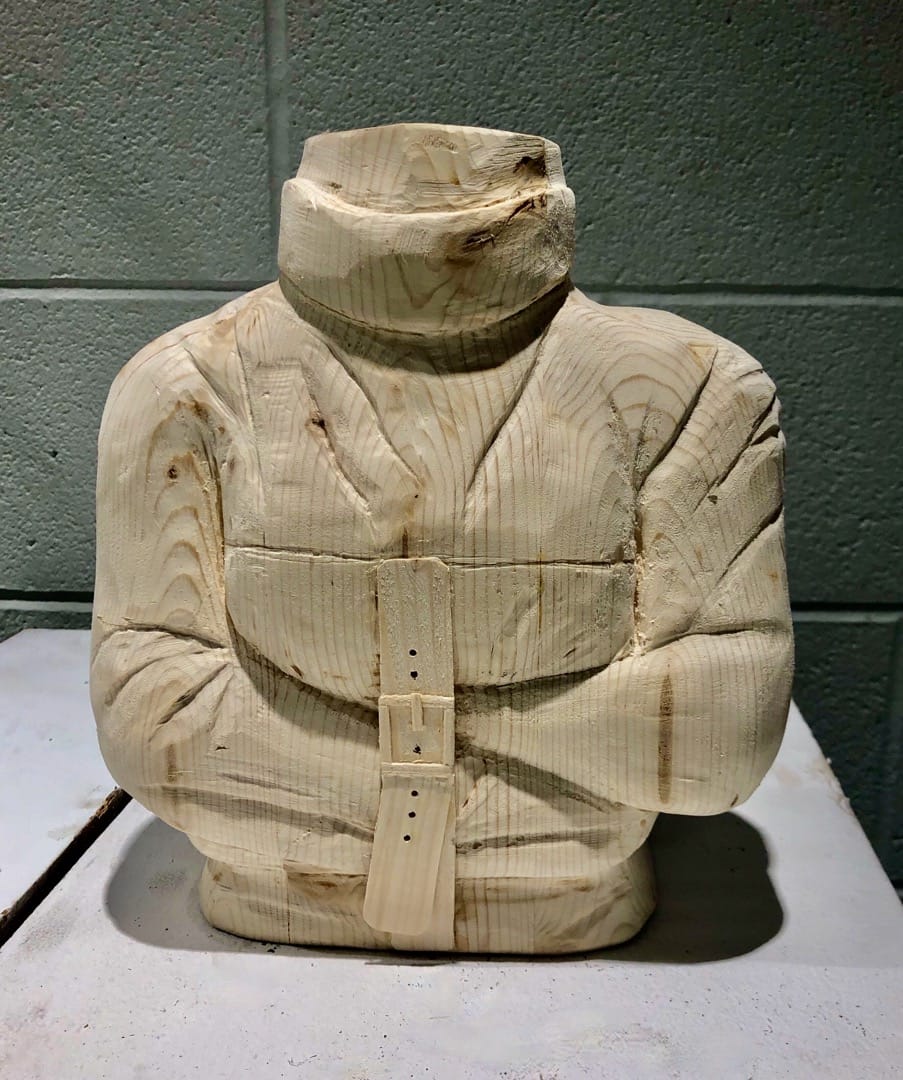
Learning Objectives
- Demonstrate an understanding of the visual elements and principles of design.
- Demonstrate an understanding of woodworking tools.
- Demonstrate an understanding of wood joinery.
Project Overview / Considerations
For this project, you will challenge the traditional concept of a birdhouse and push the boundaries of what “shelter” means in both form and function. Your goal is to explore the essence of a birdhouse while creating a dynamic, three-dimensional piece that reflects your creative vision.
The purpose of this assignment is twofold: to encourage you to reflect on your creative decision-making processes and to introduce you to some of the tools available in the wood shop.
Sometimes, when we embark on a new creative project, we become so engrossed in the process that we fail to pause and ask, “Why?” Why does this project need to exist in this particular way? Why does it require a specific size or color? What is the fundamental essence of this creation that I am making? These are some of the questions that we will try to address during class discussions.
Using the tools and techniques you discover in the woodshop, you’ll learn how to measure accurately, make precise cuts, select the right tools, and clean, strong joinery.
Some things to know –
- A 2×4, a commonly used piece of wood in home construction, is not actually 2 inches by 4 inches. Its actual dimensions are 1.5 inches by 3.5 inches and has rounded edges. Please keep this in mind while designing your piece.
- As you work, consider how you’ll display your artwork. Will it require a pedestal, mount to the wall, or sit on the floor? Since three-dimensional works are meant to be viewed from all sides, keep this in mind as you create.
- As you’re contemplating your woodworking project, consider the inherent characteristics of wood. Can you create a smooth surface, a rough one, or perhaps even both? Can you shape organic forms, such as a pear, using straight pieces of wood? Embrace the possibilities and push the boundaries of what you can achieve with this versatile material.
- These will not be painted so what you see is what you get.
- You must use all of your 2×4 so plan accordingly.
Rubric
Terms
- Carve – to make by cutting off pieces of the material it is made of
- Joinery – part of woodworking that involves joining together pieces of timber or lumber, to produce more complex items. Some wood joints employ fasteners, bindings, or adhesives, while others use only wood elements.
- Adhesive – A substance that is capable of bonding material together by surface attachment. Glue and Contact Cement are examples.
- Screw – a short, slender, sharp-pointed metal pin with a raised helical thread running around it and a slotted head, used to join things together by being rotated so that it pierces wood or other material and is held tightly in place.
- Nail – a small metal spike with a broadened flat head, driven typically into the wood with a hammer to join things together
- Phillips Head – A type of screw head requiring a driver in the shape of +.
- Flat Head – A type of screw head requiring a driver in the shape of -.
- Grit – The grade of particles in sandpaper or sharpening stones that determines the aggressiveness of the cut.
- Drill bit – cutting tools used to remove material to create holes.
- Driver bit – a drill bit used to drive screws into wood.
- Spade bit – a thin drill bit with a center point and cutting edges on either side
- Band Saw – A saw with a looped blade running around two or three wheels. Used with narrow blades for cutting freehand shapes, and with wider blades and a guide for resawing material.
- Square – A flat, metal, L-shaped tool that constitutes an accurate right angle
- Bow – A warp along the length of a board.
- Chuck – An attachment to hold work or a tool in a machine, lathe chucks and drill chucks are examples.
- Pilot Hole – A hole slightly smaller than the thread diameter of a screw drilled in a workpiece to prevent it from splitting.
Materials
- Sketchbook
- One 2×4 board, 4 feet long (provided)
- Assortment of sandpaper (provided)
- Glue, screws, and/or nails (some provided)
- Other materials to be determined
Part 1 – Sketchbook Research – Wooden Retreat
1. Read through and take notes on the woodworking terms listed above.
2. Check out some of the videos and artists listed under the Research / Examples section. Are there any work or techniques that you find interesting?
3. Without looking at any images, I’d like you to describe a birdhouse in your own words. What are the essential characteristics of a birdhouse? What are its bare minimum requirements? If you were to explain it to someone unfamiliar with birds or houses, what would you say?
4. Sketch out at least eight different ideas, but don’t worry about making them look polished or detailed at this stage. These are just quick, rough sketches.
5. Research the wood techniques you might need to use to create your birdhouse’s desired appearance.
Part 2 – Project – Wooden Retreat
- Explore the Essence of a Birdhouse
Think critically about what defines a birdhouse. Is it simply a structure with walls, a roof, and an entrance? Or is it an abstract representation of safety, comfort, and home? Use this exploration to guide your design process.
- What materials, forms, and textures evoke the feeling of shelter?
- Can you incorporate elements that mimic or contrast natural environments?
- Use Contrasts to Enhance Design
Pay attention to the physical qualities of your materials and how they can inform your design. How can these contrasts work together to create a visually engaging and functional piece?
- Textures: Smooth vs. rough
- Forms: Open vs. enclosed, simple vs. complex
- Weight and Balance: Light vs. heavy, stable vs. dynamic
- Construction and Craftsmanship
Focus on structural integrity and thoughtful construction:
- Experiment with different attachment methods, such as adhesives (wood glue), mechanical fasteners (nails, screws), or wood joints.
- Your craftsmanship should be deliberate and precise, with every connection contributing to the overall design.
- Are the surfaces intentional, whether smooth or rough?
- Are all connections strong and clean?
- Have you avoided accidental glue marks, uneven cuts, or rushed details?
- Thinking about Display
Your final piece should not only reflect your conceptual exploration but also command attention in its presentation. Your final piece should be ready for display the day of critique. Consider:
- Mounting Options: Wall-mounted, pedestal, floor-based, or suspended.
- Interaction: Should it be inviting for birds or a purely conceptual representation?
- Space: How does the piece relate to its surroundings?
Part 3 – Documentation – Wooden Retreat
- Photograph your finished sculptures and upload your images to your Google Slide Presentation. For more information on photographing three-dimensional works of art, check out the notes here (Documenting Your Work – located under Resources at the top).
Part 4 – Self-Reflection – Wooden Retreat
Answer the following self-reflection questions –
- What tools did you use to create your work? What was most surprising/challenging about the tools you used?
- Which elements and principles are most used in your work? How do those elements and principles create areas of interest?
- How does space and scale affect the way your work is perceived?
- How did your understanding of what a birdhouse could be shift or change over the course of the project?
- What works – what doesn’t? Why and how could areas be improved?
Research / Examples
Article – 8 Renowned Architects Design Birdhouses
Article – Birdhouse Architecture
Article – Market Research: 40 Birdhouses
Handout – Elements and Principles of Design
Presentation – Elements and Principles of Design
Hello Wood Art Camp
Youtube – Basic Wood Joinery
Youtube – Wood Carving / Power Carving
Youtube – Hand Carving
